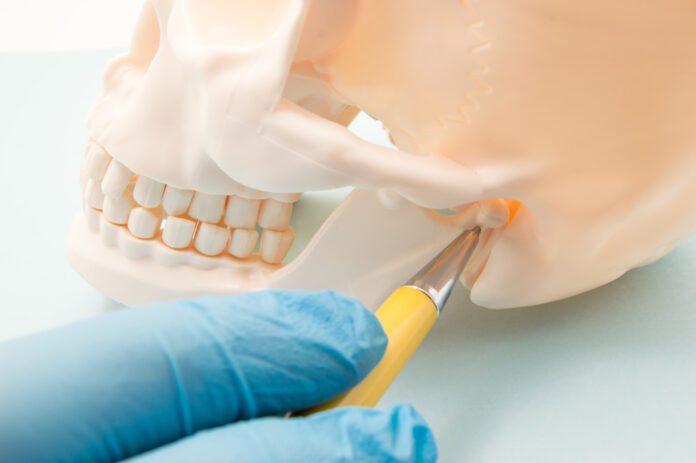Overview Of Temporomandibular Joint Disorders
Temporomandibular joint and muscle disorders (TMJ disorders) encompass a variety of different conditions that affect the chewing muscles and joints connecting the person’s lower jaw to their skull.
Commonly Associated With
TMD, Costen’s syndrome, Craniomandibular disorder, and Temporomandibular disorder
Causes Of Temporomandibular Joint Disorders
People have 2 matching temporomandibular joints on either side of their heads, located just in front of the ears. Many temporomandibular joint and muscle disorders (TMJ disorders) are due to physical stressors that happen to and around the structures of the joint.
Possible stressed structures can include:
- Muscles of the face, jaw, and neck
- Teeth
- Cartilage disk located at the joint
- Nearby ligaments, nerves, and blood vessels
But, for many people with temporomandibular joint disorder, what exactly causes their disorder is unknown.
Possible causes include:
- Poor posture
- Stress and teeth grinding
- An overbite/underbite or orthodontic braces
- Poor diet
- Lack of sleep
- Arthritis
- Previous fractures or dislocations of the jaw
- Congenital structural problems with the jaw (present since birth)
- “Trigger points” may also be present (contracted muscles in jaw, head, and neck. These may then lead to pain in other areas, earaches, headaches, or toothaches)
Symptoms Of Temporomandibular Joint Disorders
Symptoms of TMJ disorders can include:
- Jaw pain or tenderness
- Difficulty with opening or closing the mouth
- Jaw locking
- Headache
- Difficulties or discomfort with biting or chewing
- Clicking, grating, or popping sound upon opening or after closing the mouth
- Dull, aching pain in the face area
- Earache
Exams & Tests
Those with temporomandibular joint disorders will need an exam that includes:
- Listening to, watching, and then feeling the jaw as it opens and shuts
- Checking the joints and muscles for tenderness
- A CT scan, X-rays, an MRI, and a Doppler test
- Sliding the teeth from side to side
- A dental exam to check for poor bite alignment
- Pressing around the head to locate sensitive or painful areas
In some cases, the results of these exams may appear normal. However, the person’s health care provider will also need to consider other conditions that could be causing the patient’s symptoms, such as infections, nerve problems, and headaches.
Treatment Of Temporomandibular Joint Disorders
Temporomandibular joint disorders, while uncomfortable, are not particularly dangerous conditions.
Common therapies for TMJ can include:
- Muscle relaxant medications or antidepressants (but only if applicable)
- Stress-reducing techniques, such as meditation
- A diet of softer food to help calm joint inflammation, for example removing hard candies from the person’s diet
- Muscle relaxant injections such as botulinum toxin (Botox)
- Short-term use of ibuprofen, acetaminophen, naproxen, or other nonsteroidal anti-inflammatory drugs
- Gently stretch, relax, or massage the muscles around the jaw
- Avoid actions that worsen symptoms, such as singing, yawning, and chewing gum
- Heat or cold packs applied to the face
- Regular exercise, such as daily walks
- Bite analysis from a dentist (however, this should only be done by a dentist or orthodontist)
- Mouth or bite guards (also called splints or appliances)
- But only in rare cases are corticosteroid injections used for treating inflammation
Patients should be very cautious about surgical treatments for this disorder, since orthodontic surgery often results in worsened symptoms for patients, not an improvement. Therefore, surgery is not often considered a good idea for patients with TMJ.



